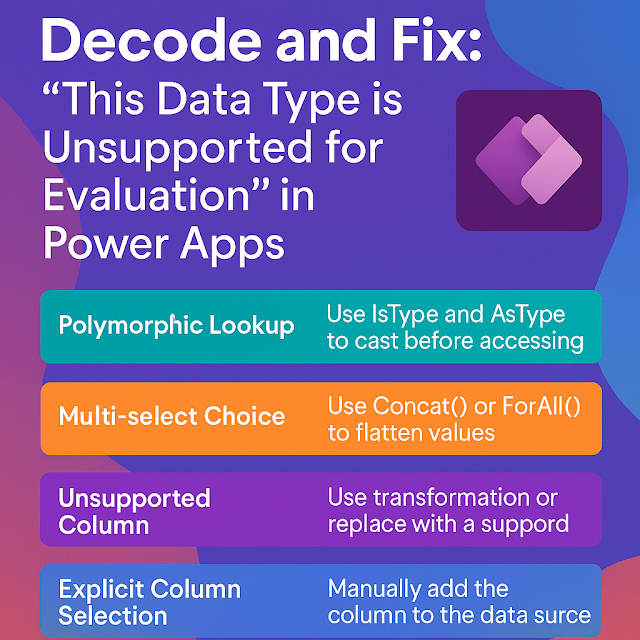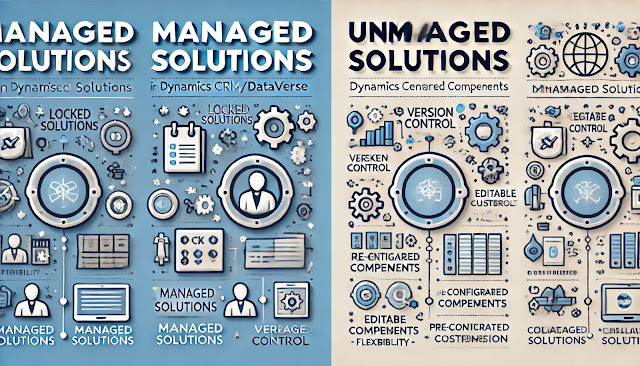Dynamics 365 Field Service : Configure push notifications
In today's mobile-first world, staying updated in real-time is essential—especially for field technicians on the move. Dynamics 365 Field Service offers push notifications to ensure that field agents are instantly informed about updates like work order assignments, schedule changes, or urgent service tasks.
In this post, we’ll explore how to configure push notifications in Dynamics 365 Field Service and ensure that your technicians never miss critical updates again.
What Are Push Notifications?
Push notifications are alerts sent from an app to a user's mobile device. In Field Service, these are especially useful to:
- Notify technicians when a work order is assigned or updated.
- Alert users of schedule changes.
- Provide reminders for upcoming appointments.
- Improve response time and service efficiency.
Prerequisites
Before configuring push notifications, ensure:
- You have Field Service mobile app installed (Power Platform-based version).
- You are using the Field Service v8+ solution.
- Technicians have Dataverse security roles that allow them to receive notifications.
- Microsoft Power Automate or D365 workflows are available (for custom notification logic).
Step-by-Step Configuration of Push Notifications
Step 1: Enable Notification Settings in the App
- Open the Field Service Mobile app.
- Sign in with your credentials.
- Go to the Device Settings of your phone and allow Notifications for the app.
- The app will automatically register the device with the Microsoft Push Notification Service (MPNS) or Firebase, depending on the OS.
Tip: You can verify device registration under System Jobs in D365 for debugging.
Step 2: Use Power Automate for Push Notifications
The most flexible and recommended method for sending push notifications is using Power Automate.
Example: Send a Push Notification When a Work Order is Assigned
1. Go to Power Automate > Create a flow.
2. Use the "When a row is added, modified, or deleted" (Dataverse) trigger.
- Table: Work Orders
- Change type: Modified
3. Add a Condition to check if the Assigned To (Bookable Resource) field is updated.
4. Use the "Send push notification" action.
- App: Field Service Mobile App
- Recipient: Email/UPN of the technician
- Message: e.g., “New Work Order assigned: \${WorkOrder.Name}”
Step 3: Use Field Service Mobile Admin Settings (Optional)
For admins who want to configure notifications across multiple devices or users:
1. Navigate to Field Service > Settings > Mobile Settings.
2. Review the Notification Templates and Device Registration.
3. Ensure your mobile project includes notification support via Woodford (Classic) or Power Platform controls.
Note: Power Platform-based mobile app handles push notification registration automatically.
Step 4: Test the Configuration
To test:
1. Assign a work order to a technician.
2. Check if the technician receives a real-time push alert on the Field Service mobile app.
3. Validate the event logs in Power Automate and check the mobile device logs.
Advanced Scenarios
- Geo-fencing Alerts: Notify technicians when they enter or leave a job site.
- Schedule Change Alerts: Send alerts if the time slot or location changes.
- Completion Reminders: Notify supervisors when work is completed.
These scenarios can be configured using a mix of Power Automate, custom plugins, and mobile app logic.
Security and Roles
To receive push notifications:
- Users must have the appropriate Field Service – Resource security role.
- The mobile app user must be synced and mapped to a bookable resource in the system.
Benefits of Push Notifications in Field Service
- Real-time updates for faster decision-making.
- Improved technician efficiency and job satisfaction.
- Reduced missed appointments or delayed responses.
- Better customer satisfaction due to proactive service.
Conclusion
Push notifications in Dynamics 365 Field Service transform how mobile workers stay informed and responsive. Whether you're a technician in the field or a dispatcher managing operations, real-time alerts enhance productivity and communication.
If you haven’t enabled push notifications yet, now’s the perfect time to bring your field operations into the real-time era.












Comments
Post a Comment